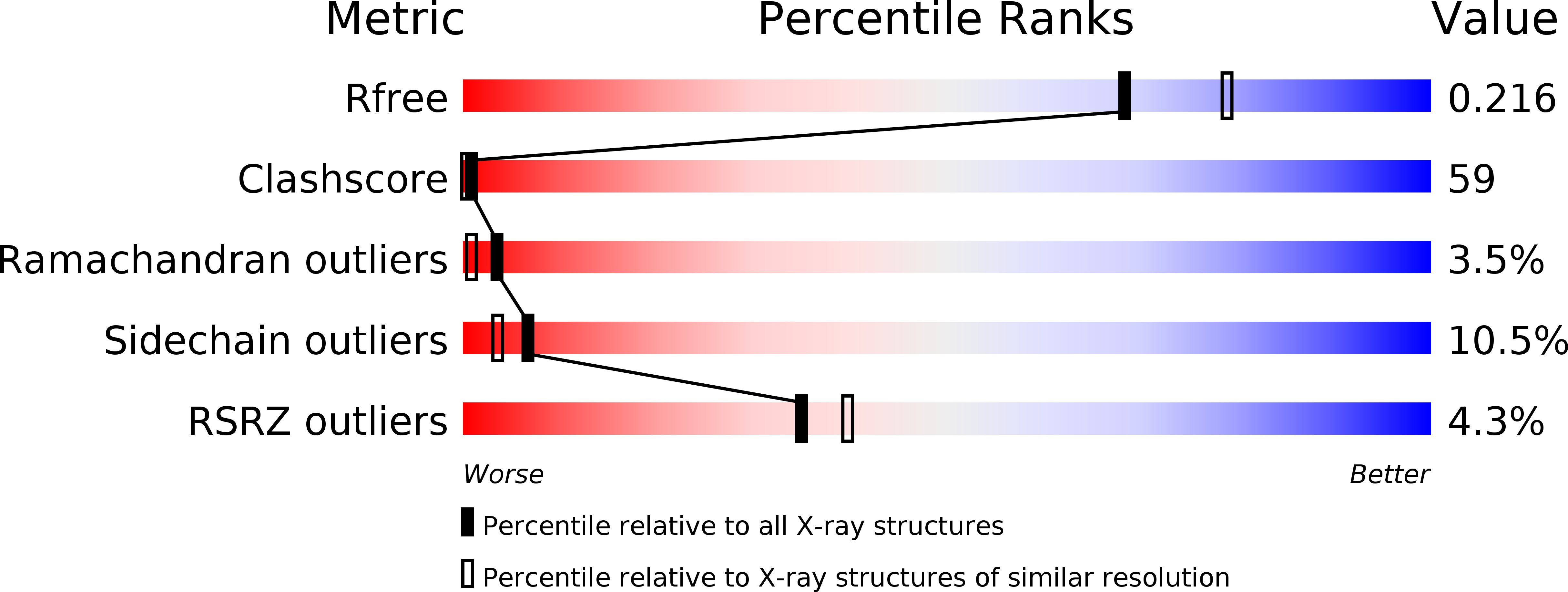
Deposition Date
2017-01-31
Release Date
2018-03-28
Last Version Date
2025-03-19
Entry Detail
PDB ID:
5X2B
Keywords:
Title:
Crystal structure of mouse sulfotransferase SULT7A1 complexed with PAP
Biological Source:
Source Organism:
Mus musculus (Taxon ID: 10090)
Host Organism:
Method Details:
Experimental Method:
Resolution:
2.08 Å
R-Value Free:
0.23
R-Value Work:
0.22
R-Value Observed:
0.22
Space Group:
P 1 21 1


